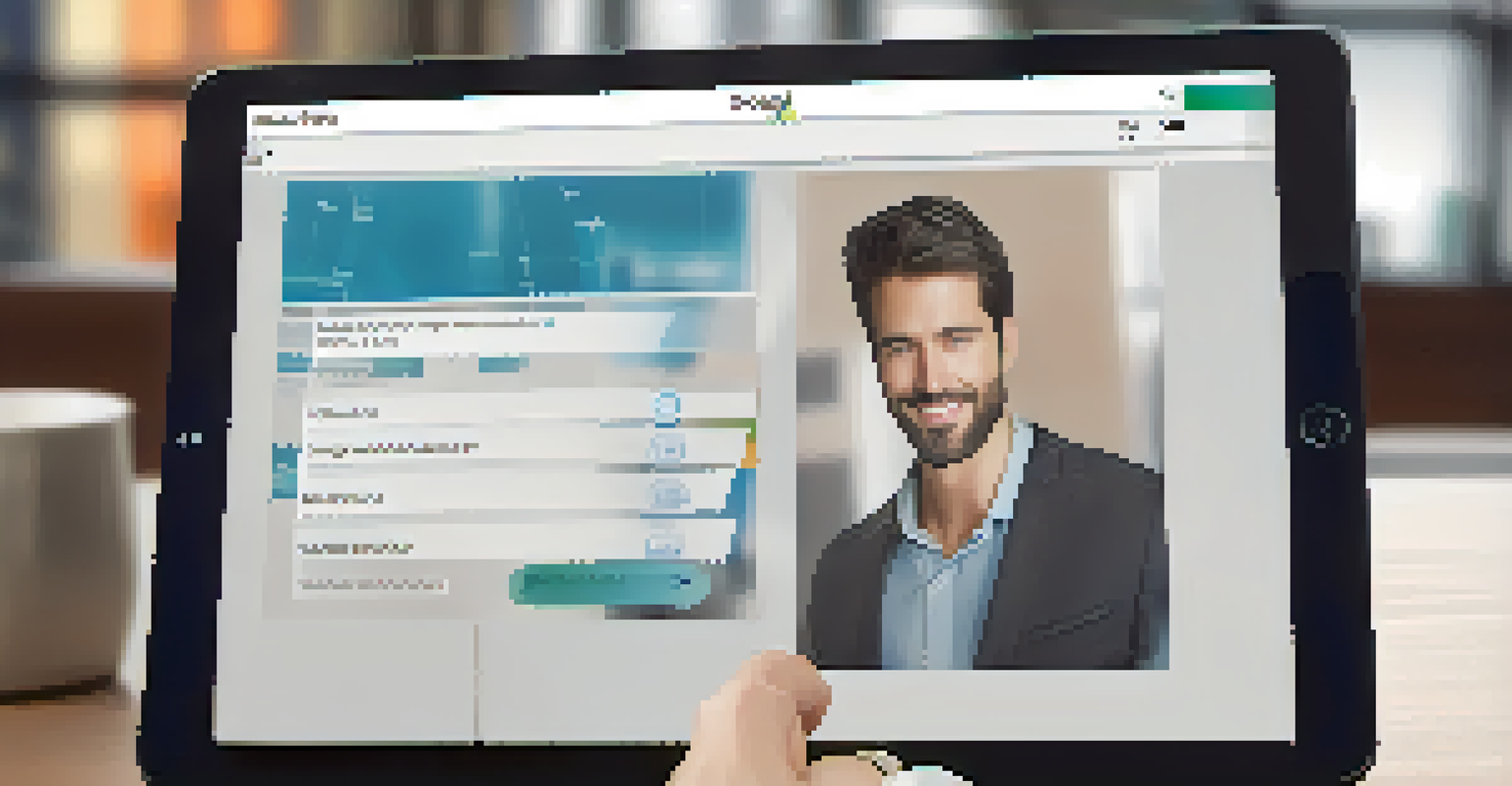Creating User Personas for Effective Software Design

Understanding User Personas and Their Importance
User personas are fictional characters based on real user data that represent different user types who might use your software. They help guide design decisions, ensuring that the final product resonates with actual users. By creating detailed personas, we can empathize with users' needs, frustrations, and motivations, which ultimately leads to a more user-centered design.
If you don't understand your users, you don't understand your business.
Imagine trying to solve a puzzle without knowing what the picture looks like. User personas provide that picture, allowing designers and developers to focus on specific user goals and challenges. This clarity can help prevent costly missteps in design that might arise from assumptions about user needs.
Incorporating user personas into the design process helps create a shared understanding among team members. When everyone from developers to marketers understands who the end user is, it fosters collaboration and unity in the project's objectives, leading to a more cohesive and effective software product.
Researching and Gathering User Data for Personas
The first step in creating effective user personas is to gather data about your actual users. This can be achieved through surveys, interviews, and analyzing usage data from existing products. By collecting qualitative and quantitative data, you can start to see patterns and trends that help define distinct user groups.

Think of this phase like a detective gathering clues to solve a mystery. Each piece of data, whether it’s user feedback or behavioral statistics, adds depth to your understanding of who your users are. This thorough research lays the foundation for building accurate and insightful personas.
User Personas Guide Design Choices
User personas help teams empathize with actual users, ensuring that design decisions are aligned with user needs and motivations.
Once you've gathered sufficient data, it’s time to segment users based on common characteristics. This might include demographics, user behaviors, or specific needs related to your software. By categorizing users, you can create focused personas that represent the diversity of your user base.
Creating Detailed User Persona Profiles
With your research in hand, it's time to craft detailed personas. Each persona should include a name, age, job title, key goals, frustrations, and a brief backstory. This level of detail helps make the persona feel like a real person, which can be incredibly powerful during the design process.
Personas are not just a design tool; they are a way to communicate the needs and expectations of users across the entire organization.
For instance, instead of just naming a persona 'Tech-Savvy User,' you could create 'Sam, the 28-Year-Old Software Developer.' By adding specific traits and narratives, you humanize the data, making it easier for your team to relate to user needs and desires.
Furthermore, including a picture or visual representation of the persona can enhance understanding and engagement. When team members can visualize who they are designing for, they’re more likely to keep user needs in mind throughout the development process.
Utilizing User Personas in the Design Process
Once your user personas are created, it’s time to put them to use in the design process. They should serve as a reference point for all design decisions, from feature prioritization to user interface choices. Whenever a question arises, designers can ask, 'What would Sam do?' to ensure alignment with user needs.
This approach fosters a user-centered mindset, encouraging the team to prioritize the experiences of real users over abstract ideas. When the focus remains on helping users achieve their goals, the design becomes more intuitive and effective.
Research is Key to Effective Personas
Gathering real user data through surveys and interviews is essential for creating accurate and insightful user personas.
Additionally, personas can help identify potential pain points before they become issues in the final product. By testing design concepts against the needs of your personas, you can catch problems early and make adjustments that lead to a more successful software solution.
Testing and Validating User Personas
Creating user personas is not a one-and-done task; it requires ongoing validation and testing. As software is developed and user interactions evolve, it's crucial to revisit and update your personas to reflect these changes. Regular feedback loops with users can provide insights that enhance the accuracy of your personas.
Consider revisiting your personas after a major software update or when launching new features. Engaging with real users through usability testing sessions can reveal whether your personas still align with their needs and expectations. This iterative process ensures that your personas stay relevant and useful.
Moreover, involving users in the persona validation process can foster community and engagement. Users appreciate when their feedback shapes the tools they use, leading to a stronger connection between the software and its audience.
Common Mistakes to Avoid When Creating Personas
While creating user personas can greatly enhance your design process, there are common pitfalls to avoid. One major mistake is basing personas solely on assumptions rather than real user data. This can lead to inaccurate representations that don’t reflect actual user needs or behaviors.
Another error is creating too many personas, which can complicate the design process. It's important to strike a balance—having too few might not represent your user base adequately, while too many can dilute focus. A good rule of thumb is to aim for three to five well-defined personas that capture the essence of your key user groups.
Regular Updates Keep Personas Relevant
Ongoing validation and testing of user personas are crucial to ensure they reflect evolving user interactions and expectations.
Lastly, failing to involve team members in persona creation can lead to missed insights and a lack of ownership. Engaging cross-functional teams in the persona development process creates a shared understanding and encourages collaboration, making the personas more effective in guiding design.
The Future of User Personas in Software Design
As technology continues to evolve, so too will the role of user personas in software design. Emerging trends such as AI and machine learning are making it easier to analyze user behavior and preferences, leading to even more accurate and dynamic personas. This means that design teams can expect to see a shift towards more personalized and adaptive software solutions.
Additionally, as user expectations change, personas will need to evolve accordingly. Keeping abreast of trends in user experience and technology will ensure that your personas remain relevant and effective. Flexibility and adaptability will be key in maintaining their value in the design process.

In conclusion, user personas will continue to be an essential tool for software design. By investing time in creating and validating these personas, teams can enhance their understanding of users, leading to more successful and user-friendly software products.